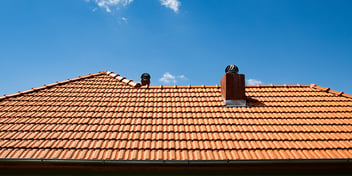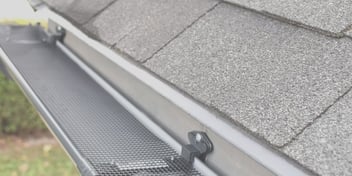- Home »
- Learningcenter »
- What are the best ways to ventilate a roof
What Are The Best Ways To Ventilate A Roof?

There are a few different ways that you can ventilate your roof, and each has its own benefits. When talking about roof ventilation, it's important to understand why it's important, how it works, and what types are available to you.
The Purpose Of Roof Ventilation
Why is roof ventilation so important? It boils down to the simple fact that warm air rises, and without proper roof ventilation, that warm air will sit in your attic, causing all kinds of problems. In the winter months, the warm humid air from your home can cause frost and ice in your attic. In the summer months, the humidity can rise to an unhealthy level, causing rot and mold from the stagnant moist air.
Adequate roof ventilation helps to facilitate airflow through the attic, expelling hot and humid air and preventing the problems caused by excess moisture buildup. Ideally, cool air will be able to enter the attic near the eaves and exit around the peak. Ultimately, you want the conditions in your attic to match the conditions outside.
Different Types Of Roof Vents
Roof vents come in many different shapes, sizes, and forms. You may be familiar with ridge vents or gable vents, but it’s important to understand the differences between louvered, turbine, power and off-ridge vents as well. Each has their own benefits depending on your roof style and ventilation needs.
Ridge Vents
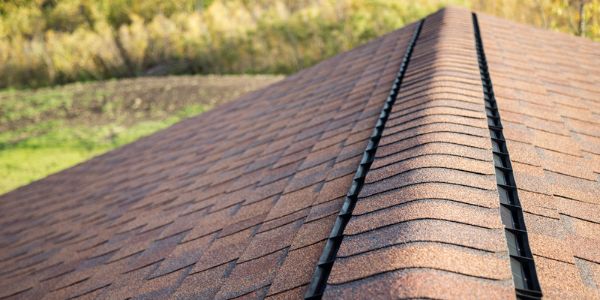
Ridge vents are one of the most popular types of roof ventilation. They provide a continuous flow of air along the entire length of your roof’s ridge line. Ridge vents can be installed on both shingled and metal roofs, making them an ideal choice for a variety of homes. Additionally, they are relatively easy to install since no additional holes need to be cut into the roof structure – all that is usually required is cutting back some existing shingles or panels in order to fit them into place.
Gable Vents
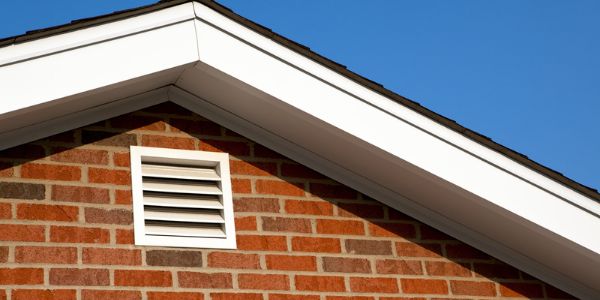
Gable vents are another popular way to ventilate your roof, and they provide a great balance between functionality and aesthetics. Gable vents are installed in the gables of your home – which are the triangular sections at either end of the roof line– and provide an efficient flow of air up through the attic space. They offer a more aesthetically pleasing option than ridge or soffit vents as they can be painted or stained to match other exterior features of your home, such as window frames or siding. Gable vents also allow for easy access if you need to inspect them for maintenance purposes, as they usually have hinged panels that open outward. Additionally, they provide excellent ventilation even in areas with higher levels of humidity due to their large size and ability to draw air from both sides simultaneously.
Soffit Vents
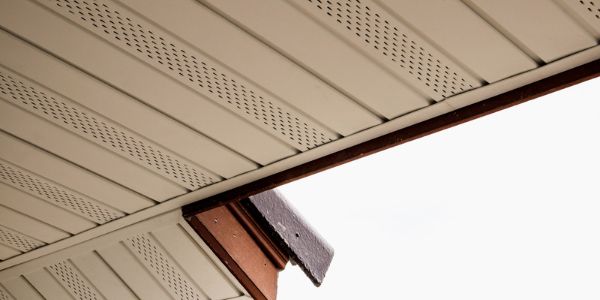
Soffit vents are a type of roof vent that provide a continuous flow of air from the eaves up into the attic space. They are typically installed at regular intervals along the length of your home’s soffits, which are the horizontal boards beneath your roof overhangs. Soffit vents allow for an even distribution of air throughout your attic while also helping to reduce humidity levels in areas with higher moisture concentrations. This helps to protect against condensation and mold growth. Soffit vents come in various sizes and shapes, making it easy to find one that fits your needs and complements the aesthetics of your home’s exterior design.
Off-Ridge Vents
Off-ridge roof vents are a great option for those looking to add ventilation to their home without compromising the aesthetics of their roof. These types of vents are installed on the sides or edges of roofs, and provide air intake along the entire length of a roof line. They are typically more economical than ridge vents, and can be used in combination with other venting systems such as soffit or gable end vents.
Turbine Vents
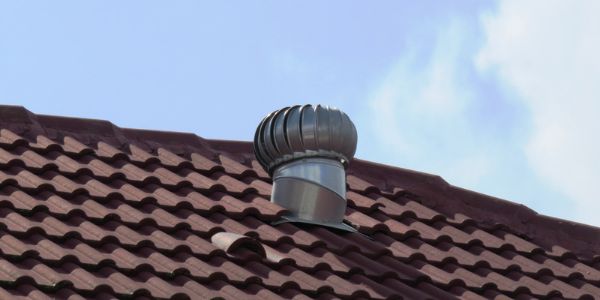
Turbine roof vents are an effective and energy-efficient way to ventilate your roof. Unlike traditional ridge or soffit vents, turbine vents use wind power to spin a turbine fan on the roof, which in turn creates suction that pulls air from the attic. This type of ventilation provides additional air circulation on hot days.
Louvered Vents
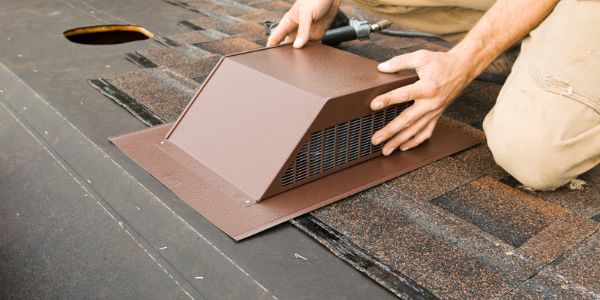
Louvered roof vents are an excellent choice for homeowners looking for effective ventilation without detracting from their home’s aesthetic appeal. It features louvres, or angled slats, which allow air to move into and out of the attic while also blocking out rain and snow. Louvered roof vents are also relatively easy to install, as they usually come pre-assembled and simply need to be attached to the roof with nails or screws. Additionally, they are designed to remain closed on days when there is no wind, allowing the attic space to stay cool and comfortable.
Power Vents
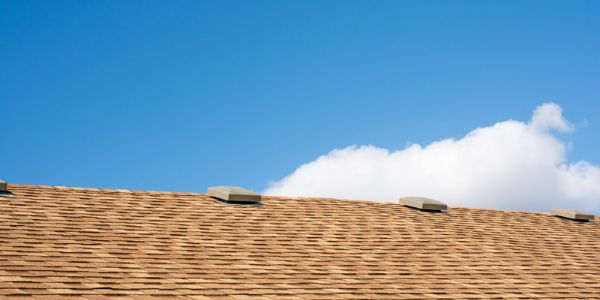
Power roof vents are an advanced and efficient type of roof vent that uses electricity to draw air from the attic space. Unlike traditional ridge or soffit vents, power roof vents use a fan system to pull air from the attic with greater force and at a faster rate. This ensures optimal ventilation and circulation in even the hottest of climates.
How To Choose The Right Vents
There are many things to consider when looking at how to choose the right roof vents for your home. Things like geography and climate, and the pitch and slope of your roof all play a role in which vents to choose.
Geography And Climate
Geography and climate play an important role in selecting the best ventilation option for your home. Different types of roof vents are designed for different climates and weather conditions, so it's important to consider how much ventilation is necessary based on where you live. For example, if you live in a cold climate with heavy snowfall, ridge vents may be the best choice as they provide air intake along the entire length of a roof line. On the other hand, if you live in an area with hot summers, solar powered attic fans can help keep your home cool by providing additional ventilation and circulation.
Roof Pitch And Slope
The angle or pitch of your roof will play a huge role in which style of vent works best for optimal airflow. For example, if you have a steeply pitched roof, ridge vents may be the best option as they provide air intake along the entire length of a roof line. On flatter roofs however, soffit vents offer additional ventilation lower down while solar powered attic fans can help with air movement and temperature control in hot climates throughout summer.
Questions To Ask When Choosing Roof Vents
The best way to choose the appropriate ventilation for your roof is to consult with a licensed roofing contractor. But what questions should you ask, as a homeowner, to be sure you properly understand your roof's ventilation system? Here a few important questions to keep in mind when discussing roof vents.
- Ask about different materials and options available on the market that might meet your specific needs such as existing vent solutions, ridge vents, turbine vents, continuous soffit vents, gable end vents, and more.
- Ask about vent sizing (the ratio of air intake to exhaust)
- Ask about insulation requirements for warmer climates or seasons
- Ask what the proper amount of overall attic ventilation is for the size of your roof space
- Ask how often to inspect for critters or debris buildup
By making sure to ask all of these questions (and anything else you're curious about!) you can make sure you fully understand your roof's ventilation system. This allows you to properly maintain it, and visually inspect it to ensure that it's performing it's job the way it's supposed to.
If you're in need of roof ventilation, or have questions about your roof's existing ventilation system, call Colony Roofers today! We offer free 30 minute inspections, and we're happy to take a look at your roof's existing ventilation and make sure it's working for you.
 Call (678) 365-3138
Call (678) 365-3138
